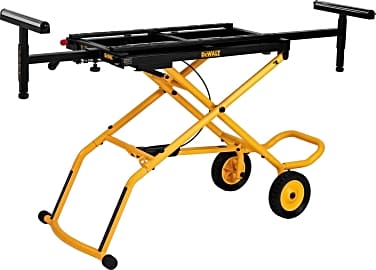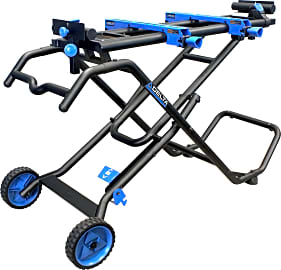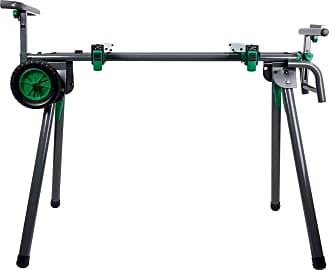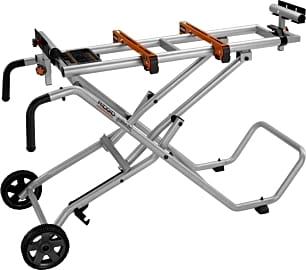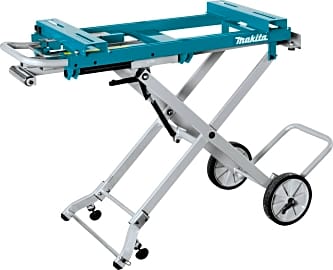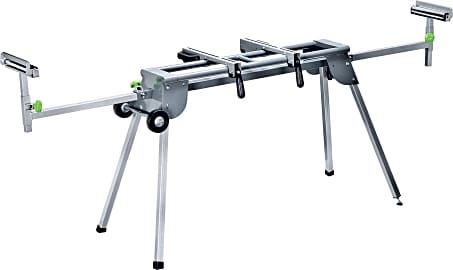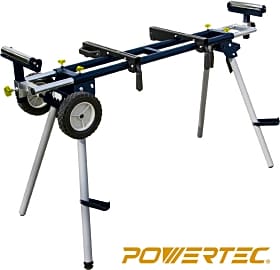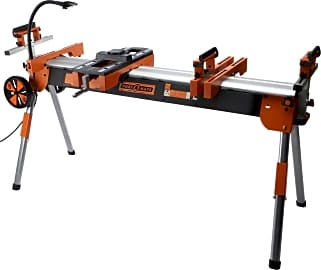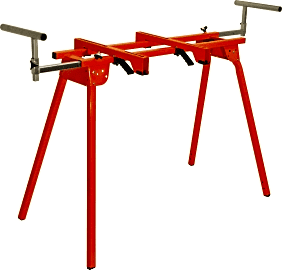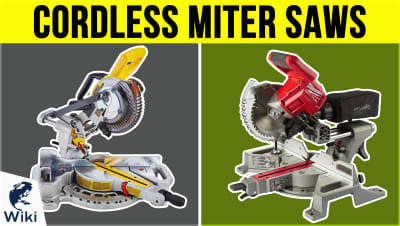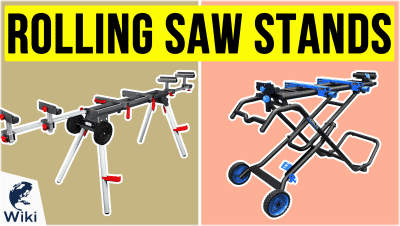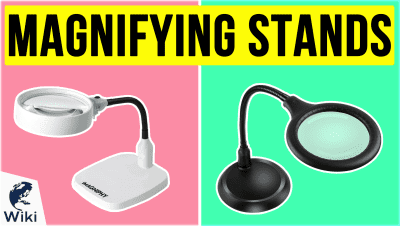The 10 Best Miter Stands

This wiki has been updated 45 times since it was first published in October of 2015. A quality miter saw stand can take much of the hassle out of using all that heavy equipment, allowing you to set up just about anywhere and, in many cases, to move your gear easily from place to place. Capable of supporting plenty of weight and adjusting to accommodate lots of materials, these best-selling models will optimize your workflow and help you get the job done faster. When users buy our independently chosen editorial recommendations, we may earn commissions to help fund the Wiki.
Editor's Notes
April 07, 2020:
During this round of updates, we removed the Milwaukee 48-08-0550 due to availability issues, and replaced the Hitachi UU240F with its predecessor the Metabo HPT UU240F – which is virtually identical to the former offering, just rebranded following the merger between Metabo and Hitachi. We also decided to do away with the DeWalt DWX724, recognizing that our rankings already included the DeWalt DWX726, a drastically superior model that was being offered at virtually the same price.
A few factors to keep an eye out for in this category:
Compatibility: Not all stands are compatible with all saws. For example the Powertec MT4000 Deluxe, in spite of being able to accommodate many larger 12-inch models, is incompatible with certain DeWalt models. Pay close attention to the limitation specifications of each stand’s mounting brackets, to make sure they’re suitable for your saw.
Capacity: If you’re considering making this purchase remotely, one metric that can help give you a clue as to each stand's sturdiness is its maximum load capacity. While a relatively low 200-pound capacity – such as that of the Ridgid AC9945 – will be serviceable for most hobbyists and indeed many contractors, framers who look for longevity in a tool, and are constantly dealing with heavy stacks of material, will likely favor a heavier limit – like the 400-pound maximum load of the Metabo HPT UU240F.
Reach: The best part about these stands is the way they convert your corded miter saw or cordless miter saw into a portable workstation. That being said, a lot of that convenience goes out the window if you need to set up platforms adjacent to your saw to help support material for long cuts. While the 79-1/4-inch extended length of models like the Powertec MT4000 Deluxe is a bit on the short side, and even bested by basic options like the Portamate PM-4000, other options like the Delta Power Equipment 36-267 can extend up to 9-1/2 feet.
It should also be noted that a stand’s physical reach can safely be considered to be significantly less than the maximum material length it can accommodate. The Bosch T4B, for example, claims to have the longest material-support capacity on the market, likely owing to the stand’s stable design. But despite being able to support material that’s up to 16 feet long, the stand itself is less than nine feet wide when fully extended.
Safety and Convenience: The Miter Stand
They go by several different names: some people call them radial arm saws, while others call them chop saws.
They go by several different names: some people call them radial arm saws, while others call them chop saws. Some simply call them buzz saws while many refer to the popular electric saw in question in reference to the type of cut it makes, naming the tool the miter saw. We'll discuss miter cuts in detail below, and will touch on why they are so important for everything from home building to fine furniture design; first, though, we're discussing the stand that sits beneath the saw.
For indeed even the best miter saw can be awkward and even unsafe to operate when not paired with a great stand. A miter stand raises a saw up to around the waist level of the operator (most can easily be height-adjusted), placing the cutting blade and control surfaces at the perfect position for ergonomically comfortable and safe use by the carpenter performing the cuts. A miter stand is akin to what a military strategist would call a "force multiplier"; it augments and improves the function of a tool that you were already going to rely on anyway, making your work easier, swifter, and more precise at the same time.
Unless your miter saw is permanently affixed to a work table, you should own and use a miter stand, it's that simple. A saw that is not secured to a work station or stand can potentially shift or fall at any time, presenting a massive danger of injury (and a near-certainty of ruining the piece of lumber you are cutting at the time).
When considering which stand will best suit your needs, think first in terms of storage and portability. If you move from job site to job site, the more easily you can fold up your stand when it's time to move, the better. You will save time and effort thanks to your quickly-collapsing, quickly-deploying stand, and time adds up to money. If you rarely switch project sites, or if you are looking for a stand that you will use almost exclusively in your own home, the ability to be broken down and set up with ease will be less of a selling point, unless storage space is at a premium in your garage or workshop.
Most miter stands feature extendable arms that can help support a long, heavy board as you preform cuts. In fact, considering a stand without these side supports is a poor idea based on how useful they can be (especially when you are working alone). Instead, simply consider how wide you would ideally like these boards to reach when extended based on the length of the lumber you usually use. For reference, some stands are designed to support boards measuring up to ten feet in length, while others can accommodate lumber as long as sixteen feet from end to end.
Tangential to the considerations of length capacity, also consider the weight limit of a stand you are researching. Some miter stands are only rated to support 300 pounds, while others can safely hold 500 pounds or more. If you cut long, thick boards such as are used in framing, this added weight accommodation may be needed.
Finally, don't overlook the amazing convenience added by wheels. Most miter stands have wheels that can be used to move the stand around, but some require the saw to be removed prior to their use, while others feature wheels that allow for movement around a work site while the saw is in place. Still others have no wheels at all; these stands are usually much cheaper in price, but also can be much less convenient to transport.
What Is a Miter Cut, Anyway?
A miter joint is a point at which two similar pieces of building material meet at a beveled edge to form a secure connection such as might be needed to build everything from a picture frame to a piece of furniture to a doorframe for a home. The most common example of miter cuts, and the easiest way for most people to understand them, is indeed the example of the frame.
The most common example of miter cuts, and the easiest way for most people to understand them, is indeed the example of the frame.
Most frames, be they for a painting, a window, or a door, feature at least two miter joints (four in the case of the framed artwork). In these cases, pieces of lumber are cut to 45-degree angles and then joined together such that they create a crisp 90-degree angle where they meet.
However, miter joints are not always a meeting of two 45-degree angles. The rafters of a steeply-angled roof, for example, often necessitate pieces of lumber cut to angles sharper than 45-degrees, while the pitch of a more gently sloped roof would see a more obtuse degree of miter joining.
Miter cuts are easily made by electric saws that can pivot around on their stands even as a board is held firmly in place. When a miter saw and miter stand are used in concert, even long, heavy pieces of wood can be secured in place and then treated to deft cuts, allowing for precision even when a carpenter is working with large, bulky materials and a powerful electric saw.
Saw Stand Safety 101
Before you even consider plugging in a saw that has been placed atop a miter stand, you must ensure that you have fully and properly attached the saw to the stand. Any jiggling you detect will only be magnified by the vibrations of the running saw, and a loose saw can ruin the precise cuts you are trying to make or lead to even worse damage or injury.
Before you even consider plugging in a saw that has been placed atop a miter stand, you must ensure that you have fully and properly attached the saw to the stand.
Also be sure to check all of the various adjustment and locking features of the miter stand itself, making certain that its legs are locked in place, its support arms are secured, and that it's wheel locks are engaged. Be certain as well that the stand is resting on stable, level ground and that no debris has gotten underneath the stand or between the saw and stand.
It's always wise to, at the minimum, wear safety gloves and protective goggles when you are operating a power saw. Even the most carefully setup and inspected saw in the hands of the most cautious and skilled operator can still send bits of debris faking at random, and these can lacerate a hand or damage an eye.
And when you have finished using a miter saw, make sure to unplug the tool and wrap the cord around the saw or stand where it is fully out of the walking path of all those in the area.


